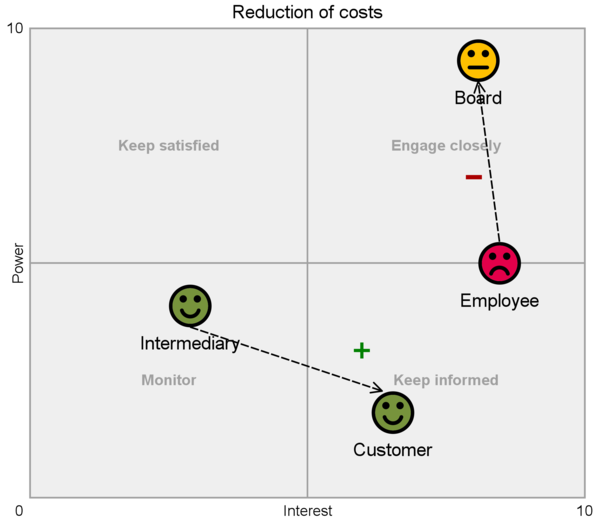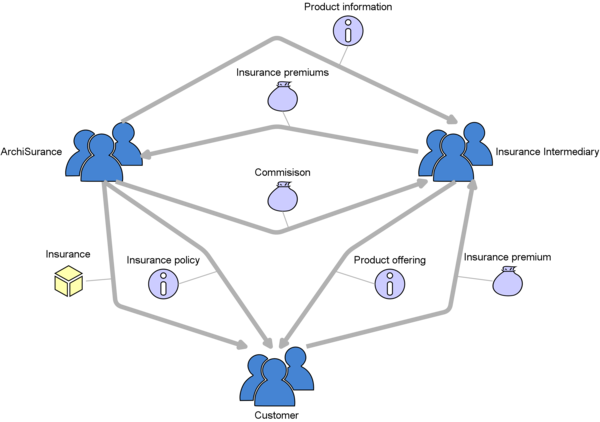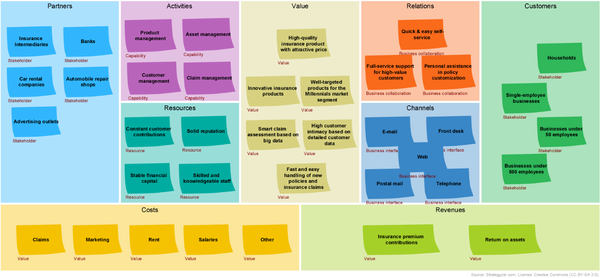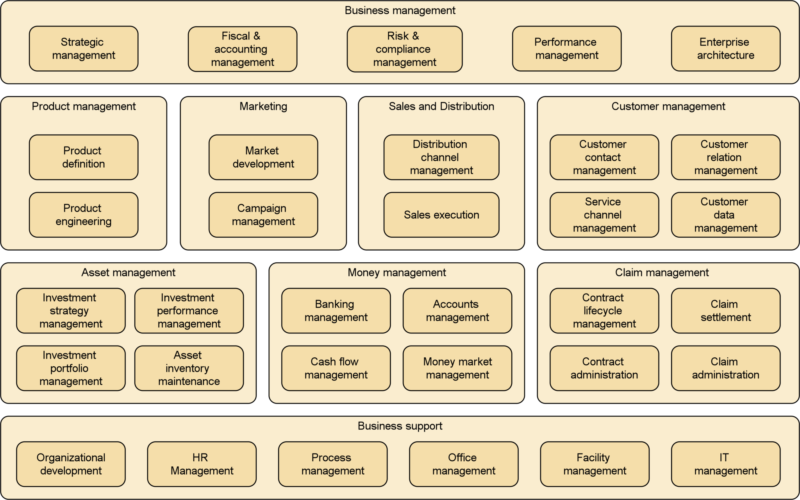Today, organizations need to move at speed and adapt their business to a volatile environment, while at the same time dealing with many inside and outside stakeholders and influences, ranging from customers and partners in the ecosystem to regulators, competitors, and the uncertain effects of politics (viz. Brexit or the US-China trade war). To be an adaptive enterprise, business architecture is an indispensable discipline. Without an architectural approach to your business, you will quickly get mired in the myriad changes and effects, without a clear path forward.
Business architecture as a discipline helps you design how the business models of your enterprise are translated to operating models. Roughly speaking, a business model tells you how you create value for customers and sustain your business, and an operating model provides concrete ways of delivering that value and running your business. To that end, business architecture provides insight into the capabilities, resources and value streams of the organization in the context of its ecosystem. It helps you design a suitable organization and the requisite business processes, identify opportunities for innovation, trace the impact of internal and external policies and regulations, and much more.
Typically, the starting point for your business architecture is the strategic direction provided by the envisaged business models of your enterprise, e.g. expressed using the Business Model Canvas, and various assessments such as Balanced Scorecards, SWOT analyses and scenario analyses to evaluate various options. Techniques such as capability-based planning and analysis, organization mapping, information mapping, and business outcome journey maps then help you concretize the value creation by your enterprise and also provide feedback on the feasibility of your business model alternatives.
This is just a sample of the techniques involved in business architecture. To keep track of all these elements and their interconnections, models are an essential instrument. They help you formalize, manage and analyze these artifacts and ensure the bits and pieces are consistent with each other.
The ArchiMate modeling language is a great tool to underpin these business architecture techniques. In BiZZdesign’s own Enterprise Studio & Horizzon software suite, we use it as the underlying metamodel for all our business architecture and strategy views.
In business architecture even more than in more technology-oriented branches of the architecture discipline, adapting your communication to your audience is key. Business stakeholders are often less experienced in reading ‘technical’ diagrams. The standard ArchiMate notation, which was developed to support precise communication between architects, may not be the best choice for them. But the ArchiMate specification also stresses the importance of stakeholder-oriented architecture views and viewpoints, and even describes a mechanism to support these in Chap. 14 of the standard. That chapter explains how to construct views that contain specific parts of the overall architecture model and are depicted in stakeholder-oriented ways to address specific concerns. Architecture viewpoints provide the templates for such views. In our software platform, we have pre-configured a broad array of such viewpoints, and below are some examples.
Everything starts of course with your stakeholders. The picture below shows the classical Power Grid for stakeholder analysis, where you see some stakeholders involved with a cost reduction goal. This doesn’t look like ArchiMate, but the smiley and frowny faces are actually ArchiMate stakeholder elements, and the arrows between them are ArchiMate’s influence relationships.

Below is a simple ecosystem map for an insurance company, again based on ArchiMate concepts but depicted differently. Here, we see various flow relationships between the parties in the ecosystem, including what is flowing between them.

Zooming in further on the business of this company we have a Business Model Canvas, again based on ArchiMate, in which each element is labeled with the ArchiMate element type used (click to zoom in). This is just one example, and other mappings of ArchiMate concepts on the BMC’s elements are also possible.

The next figure shows the capability map of our example insurance company. I have just switched off the Capability icon to simplify the picture a bit, so this is the closest to a standard ArchiMate diagram.

A final example is the Business Outcome Journey map shown below. Again, this is based on ArchiMate concepts. At the top of the figure, we already use the Value Stream concept that will arrive in the next version of the ArchiMate standard due later this year. For each value stream stage, we see its goals and outcomes, the value it should deliver, the capabilities that support it, and the added value of each capability represented as a metric.

The examples above are just a small sample of what is possible with ArchiMate models, even without depicting them using ArchiMate’s standard notation. All of the examples above are from a single model, as you may already have observed. I have not shown more details of the more operational solution architectures of business processes, IT systems, infrastructure and other elements, but of course those are part of this same model.
For business architecture to become a successful discipline, it is essential that it is linked ‘upstream’ to the business strategy and ‘downstream’ to the realization in operational architecture and design. ArchiMate models provide an ideal backbone for this traceability. ArchiMate bridges the gap between “free-format” strategy models and detailed solution architecture models. It offers full traceability from stakeholders and their drivers, via strategic change goals and desired outcomes, to capability development, supporting architecture, and change initiatives. Moreover, as you can see from the examples above, with the right tool support you can easily adapt the visualization of your architecture models to the diverse needs of different stakeholder groups.
If you’re interested to know more about ArchiMate for business architecture, join my webinar!